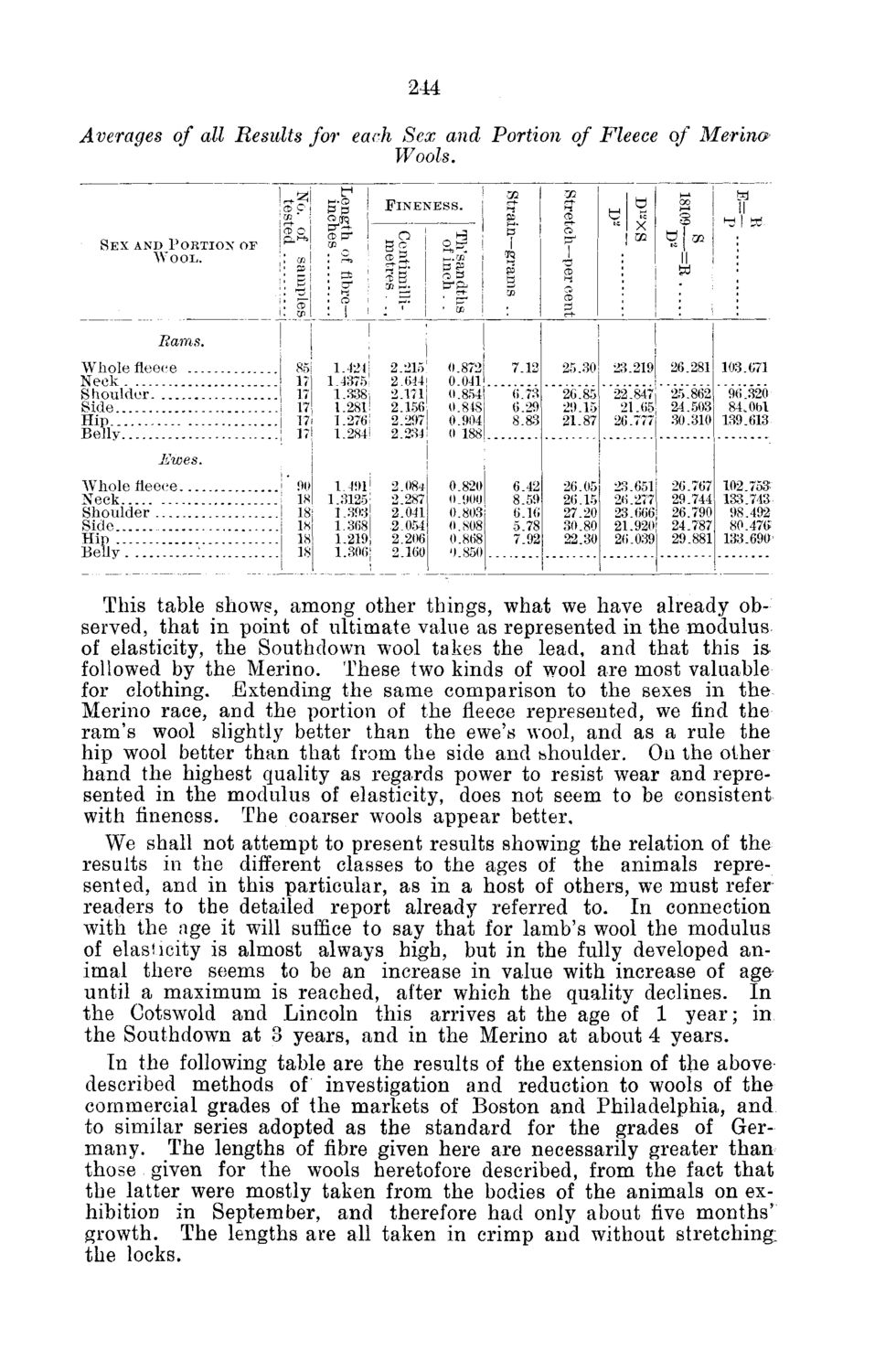Caption: Board of Trustees Minutes - 1886
This is a reduced-resolution page image for fast online browsing.

EXTRACTED TEXT FROM PAGE:
244 Averages of all Results for each Sex and Portion of Fleece of Merino Wools. U^l S E X AND P O K T I O X O F WOOL. M.CD t-1 FINENESS. 8 0(jq p-^ C P" D cc p2 CD I X II ^ 1 tti. "» C g. D ~o 3g -^ 2^ H-.CC o a w& hs w 1 Rams. Whole fleece Neck Shoulder Side Hip Belly Ewes. WThole fleece Neck Shoulder Side Hip Belly 1.491! 1.3125I 1.393! 1.368 1.219! 1.3061 1.421 1.4375| 1.338! 1.281! 1.276! 1.284! 35 . 7" 2.215; 2.644| 2.1711 2.156; 2.297 2.234! 0.872 0.041 0.8541 0.848| 0.9041 0 188! 0.820 0.900 0.803 0.808 0.8681 0.850 7.12 6.73 6.29 8.83 25.30 23.219 26.281 103.671 26.85 22.847 25.862! 96.320 21.65 24.503 84.Obi 29.15 21.871 26.7771 30.310 139.613 : 2.084 2.2871 2.041 .2.054^ 2.206 2.160 6.42 8.59 6.161 5.78 7.92 26.05 26.15 27.20 30.80 22.30 23.651 26.2771 23.666 21.920; 26.039 26.767 102.753 29.744 133.743 26.790 98.492 24.787 80.47(> 29.881 133.690' This table shows, among other things, what we have already observed, that in point of ultimate value as represented in the modulus of elasticity, the Southdown wool takes the lead, and that this isfollowed by the Merino. These two kinds of wool are most valuable for clothing. Extending the same comparison to the sexes in the Merino race, and the portion of the fleece represented, we find the ram's wool slightly better than the ewe's wool, and as a rule the hip wool better than that from the side and shoulder. On the other hand the highest quality as regards power to resist wear and represented in the modulus of elasticity, does not seem to be consistent with fineness. The coarser wools appear better. We shall not attempt to present results showing the relation of the results in the different classes to the ages of the animals represented, and in this particular, as in a host of others, we must refer readers to the detailed report already referred to. In connection with the age it will suffice to say that for lamb's wool the modulus of elasticity is almost always high, but in the fully developed animal there seems to be an increase in value with increase of age until a maximum is reached, after which the quality declines. In the Cotswold and Lincoln this arrives at the age of 1 year; in the Southdown at 3 years, and in the Merino at about 4 years. In the following table are the results of the extension of the above described methods of investigation and reduction to wools of the commercial grades of the markets of Boston and Philadelphia, and to similar series adopted as the standard for the grades of Germany. The lengths of fibre given here are necessarily greater than those given for the wools heretofore described, from the fact that the latter were mostly taken from the bodies of the animals on exhibition in September, and therefore had only about five months' growth. The lengths are all taken in crimp and without stretching: the locks.
|